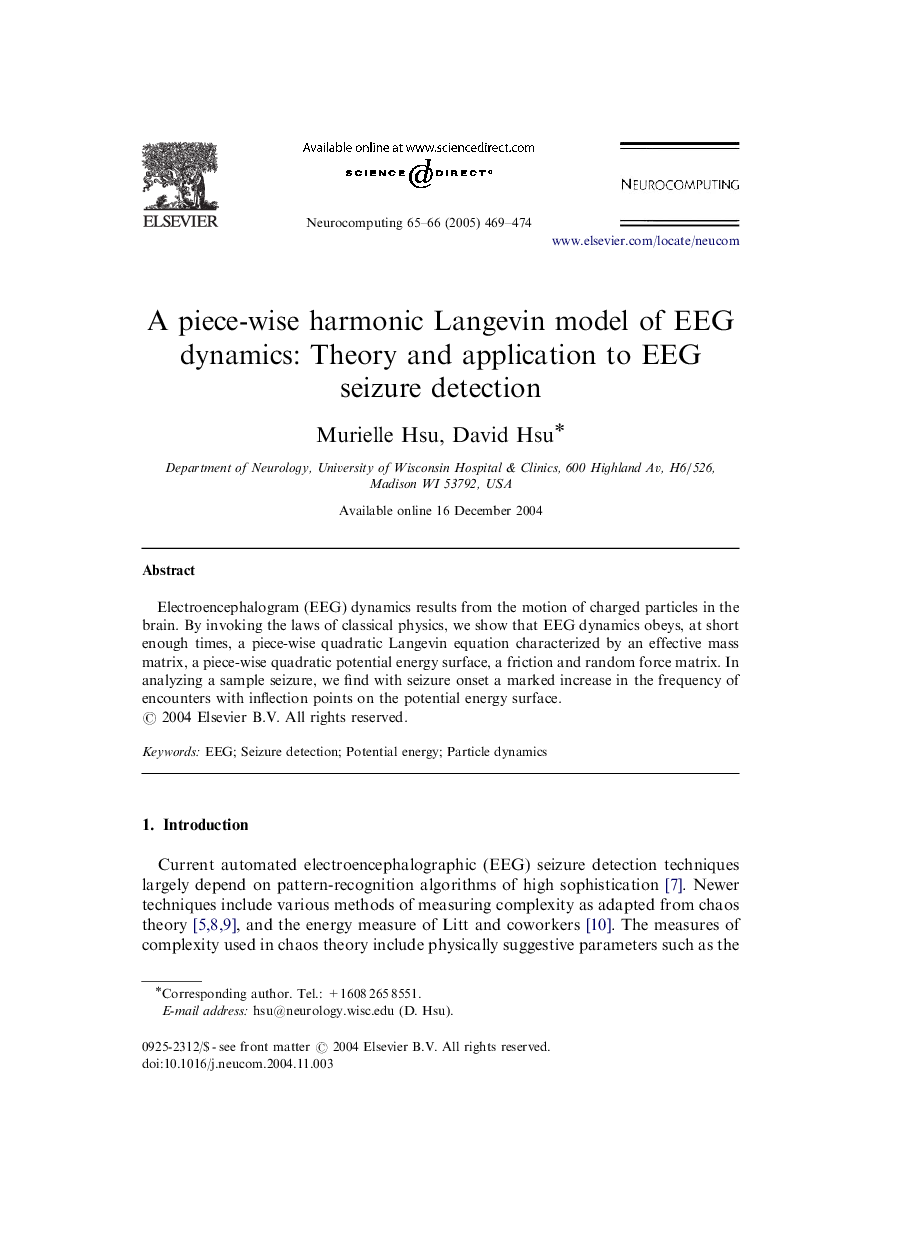| Article ID | Journal | Published Year | Pages | File Type |
|---|---|---|---|---|
| 9653517 | Neurocomputing | 2005 | 6 Pages |
Abstract
Electroencephalogram (EEG) dynamics results from the motion of charged particles in the brain. By invoking the laws of classical physics, we show that EEG dynamics obeys, at short enough times, a piece-wise quadratic Langevin equation characterized by an effective mass matrix, a piece-wise quadratic potential energy surface, a friction and random force matrix. In analyzing a sample seizure, we find with seizure onset a marked increase in the frequency of encounters with inflection points on the potential energy surface.
Related Topics
Physical Sciences and Engineering
Computer Science
Artificial Intelligence
Authors
Murielle Hsu, David Hsu,
